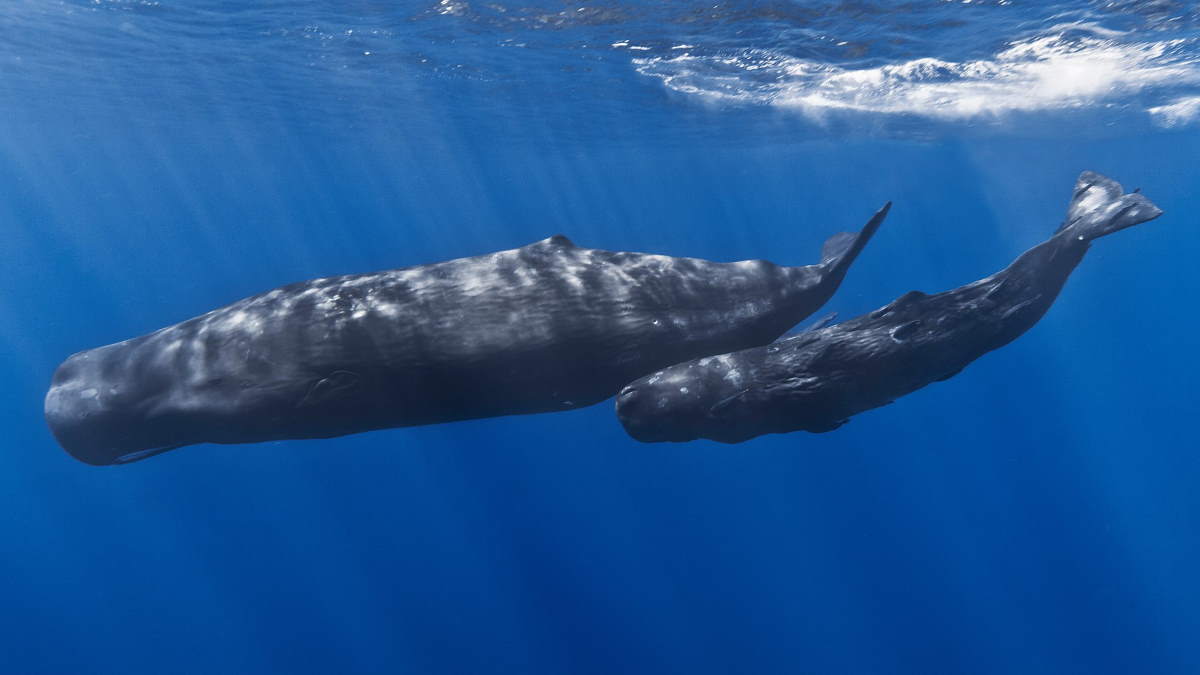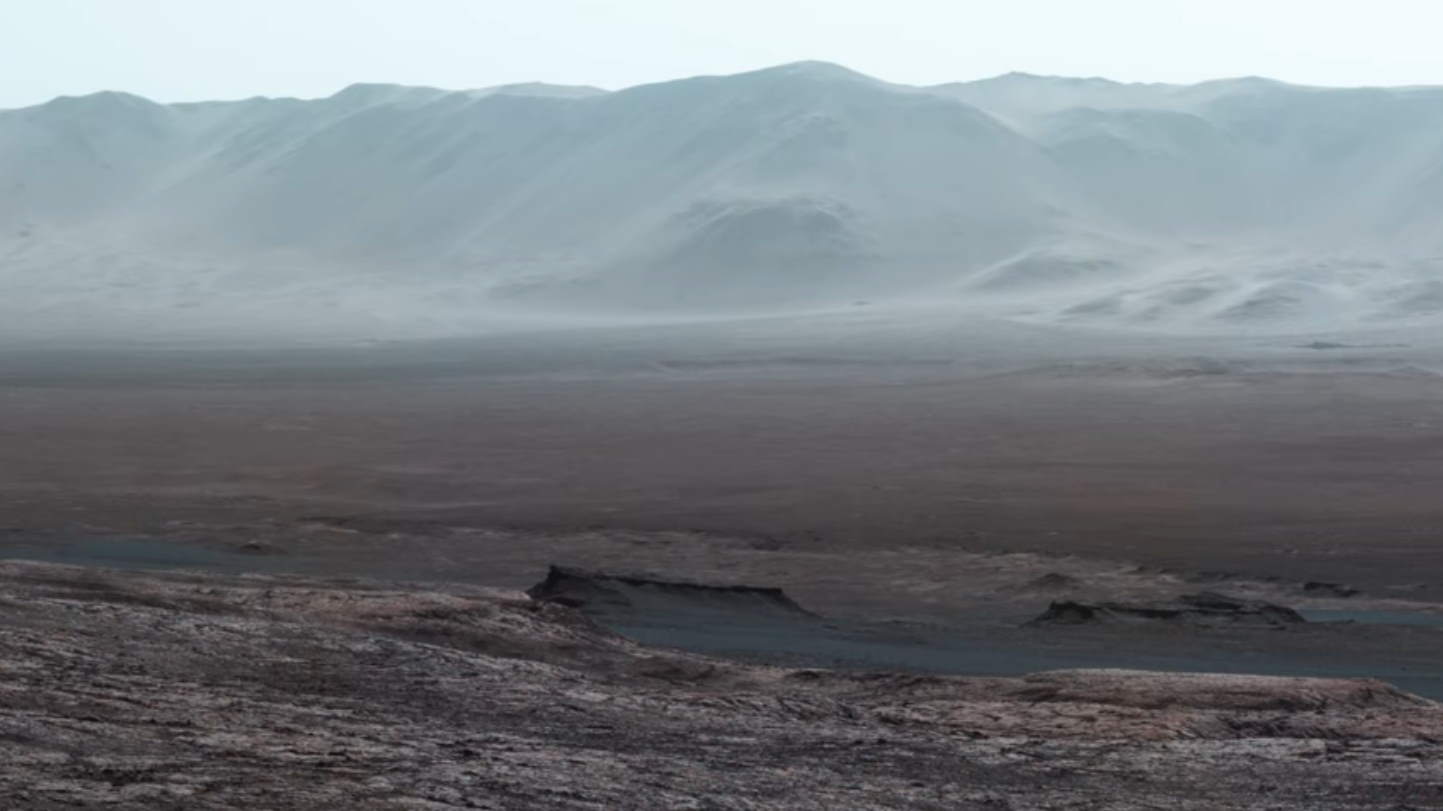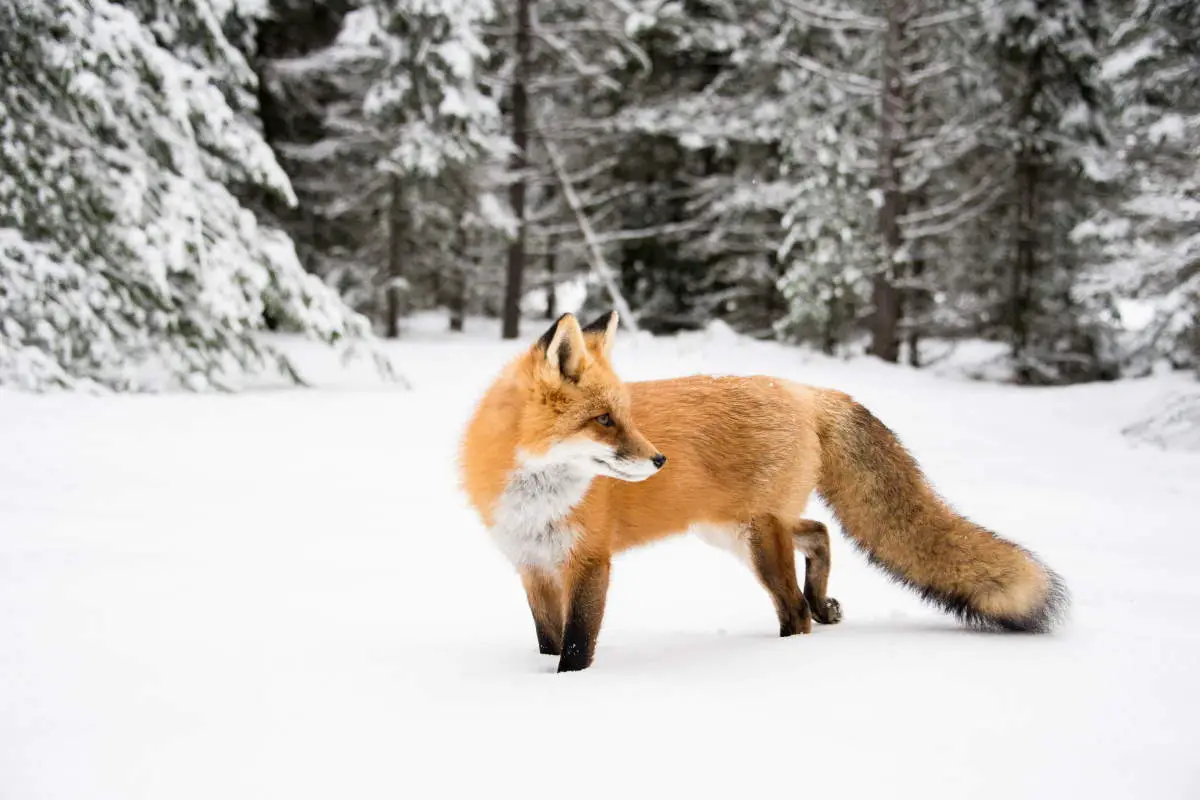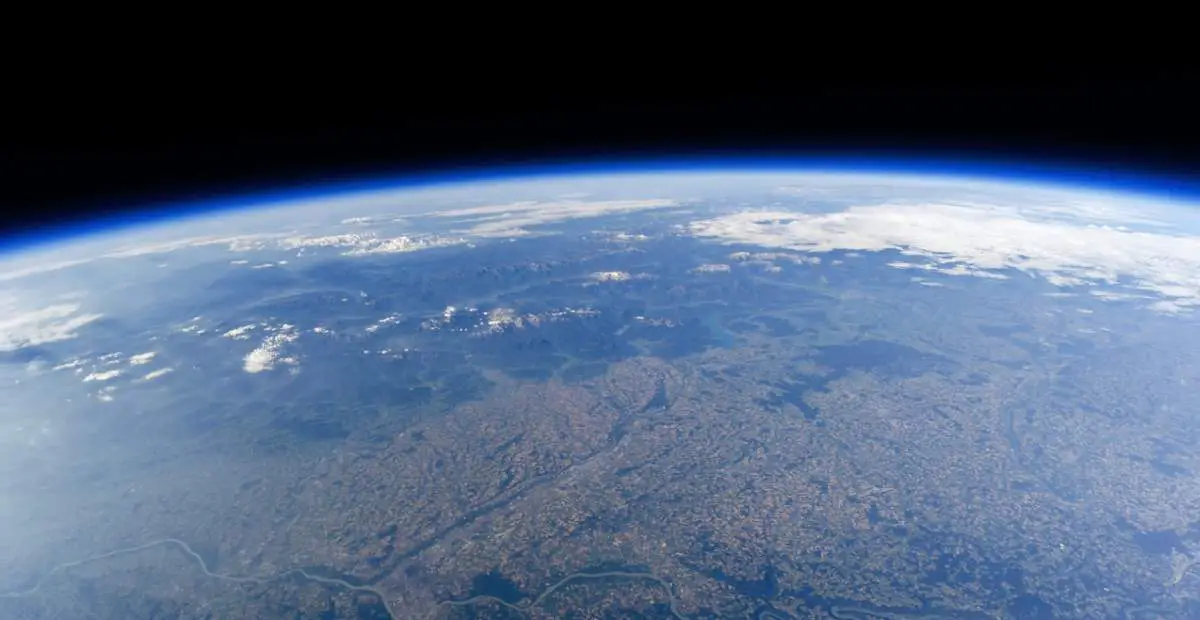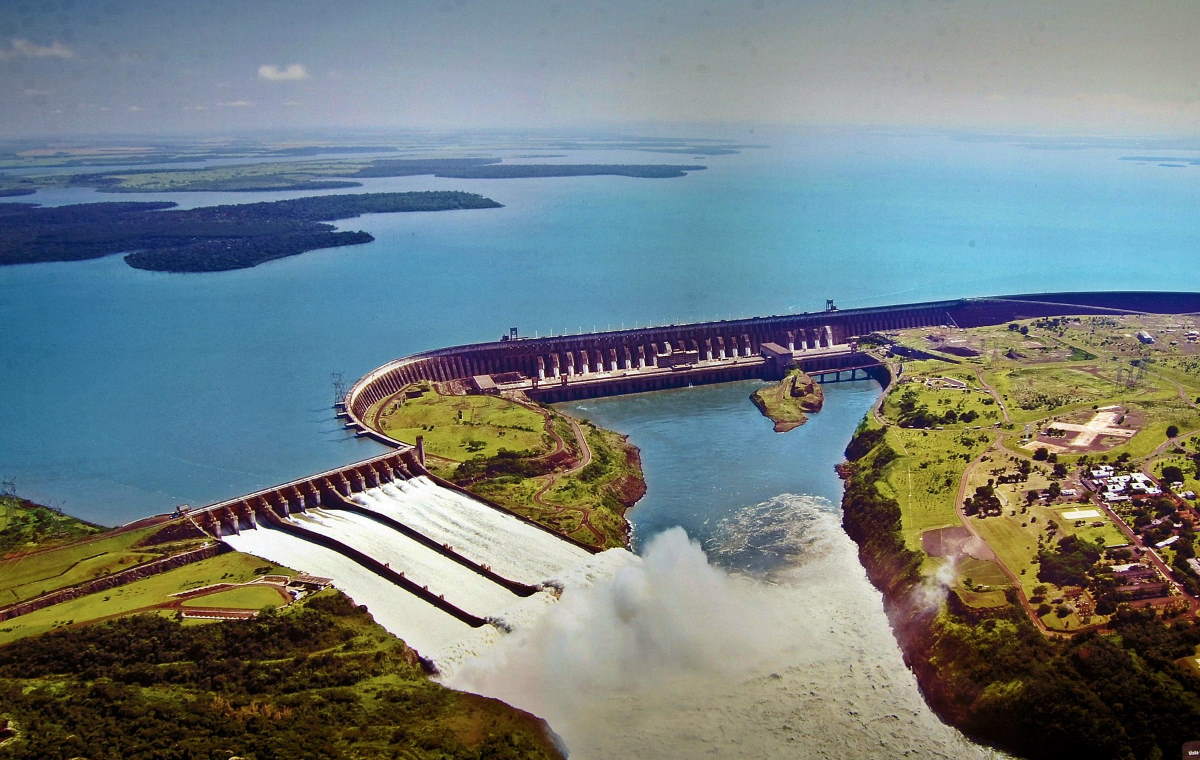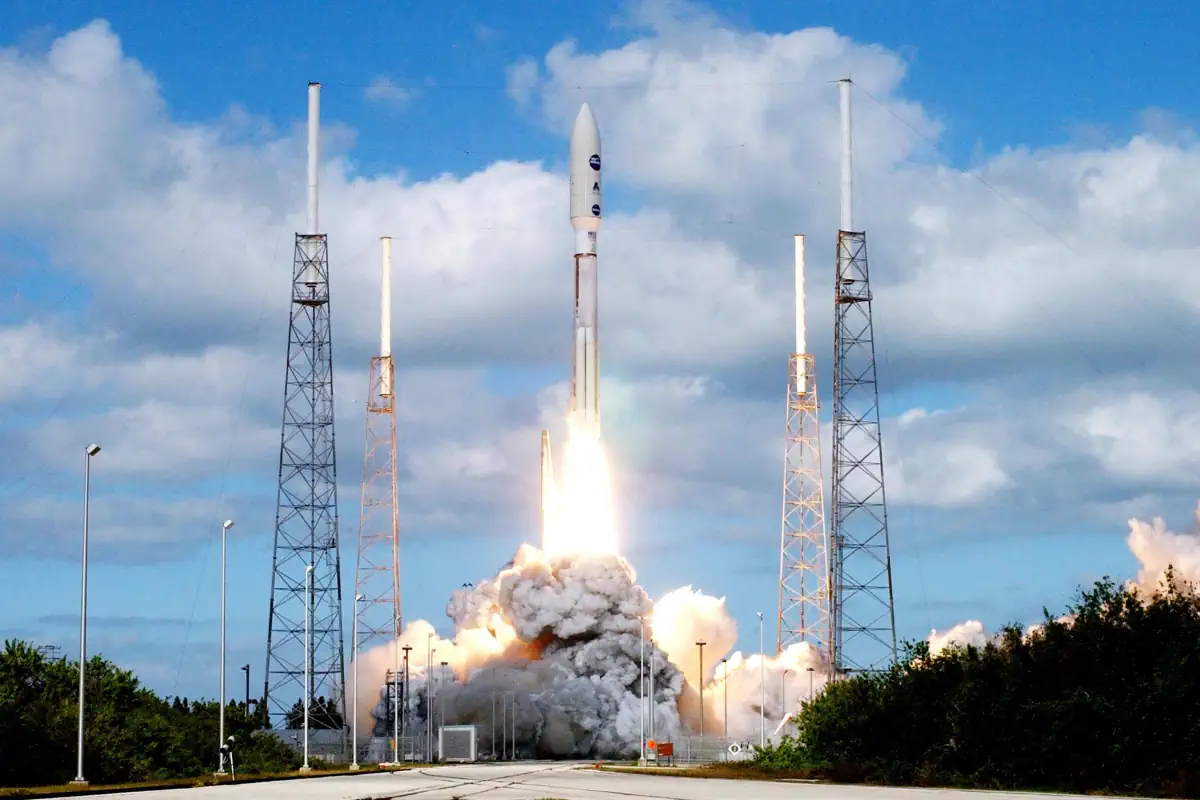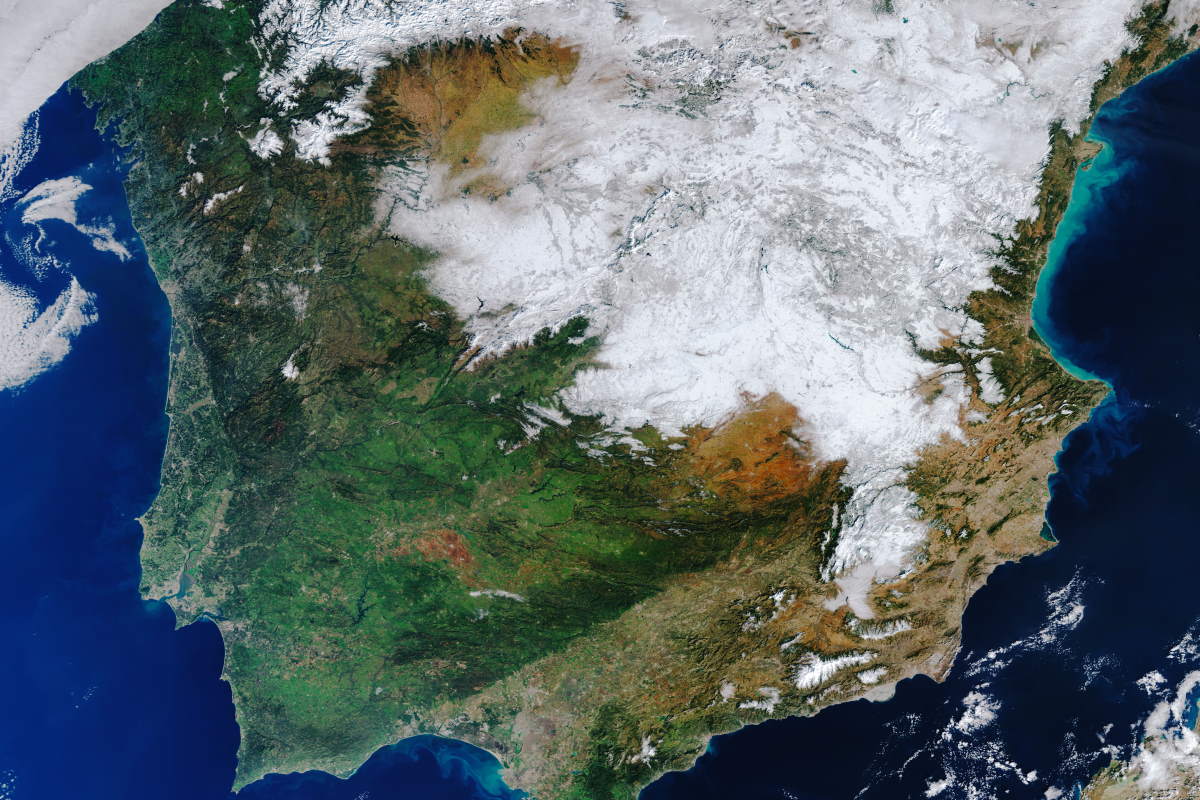Why there are no stars in space photos? Or in moon landing photos? Because, when you try to shoot a very bright object (for example, the Earth) and very dim objects (stars) in the same frame, you cannot properly expose both. To be able to see the stars, the bright object would have to be overexposed making it appear as a featureless white blob.
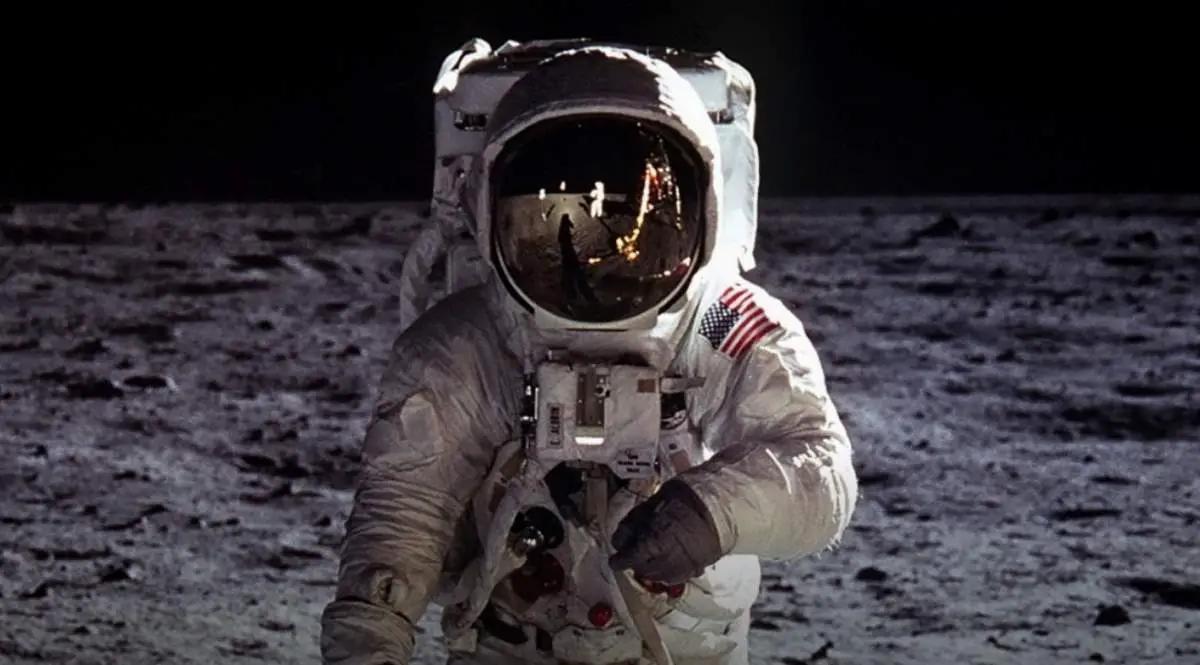
This is the actual photograph as exposed on the moon by Armstrong. He held the camera slightly rotated so that the camera frame did not include the top of Aldrin's portable life support system ("backpack").
A communications antenna mounted on top of the backpack is also cut off in this picture. When the image was released to the public, it was rotated clockwise to restore the astronaut to vertical for a more harmonious composition, and a black area was added above his head to recreate the missing black lunar "sky" (Related: Why there are no stars in space photos?). The edited version is the one most commonly reproduced and known to the public, but the original version, above, is the authentic exposure. This image was cataloged by NASA Headquarters of the United States National Aeronautics and Space Administration (NASA) under Photo ID: AS11-40-5903. Image: Wikipedia

